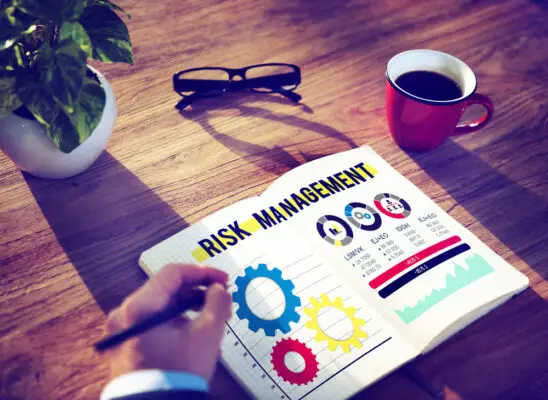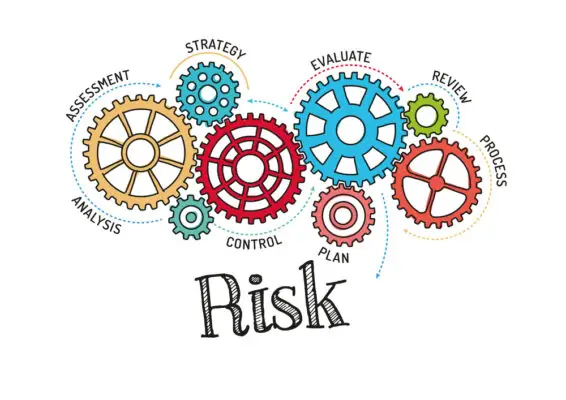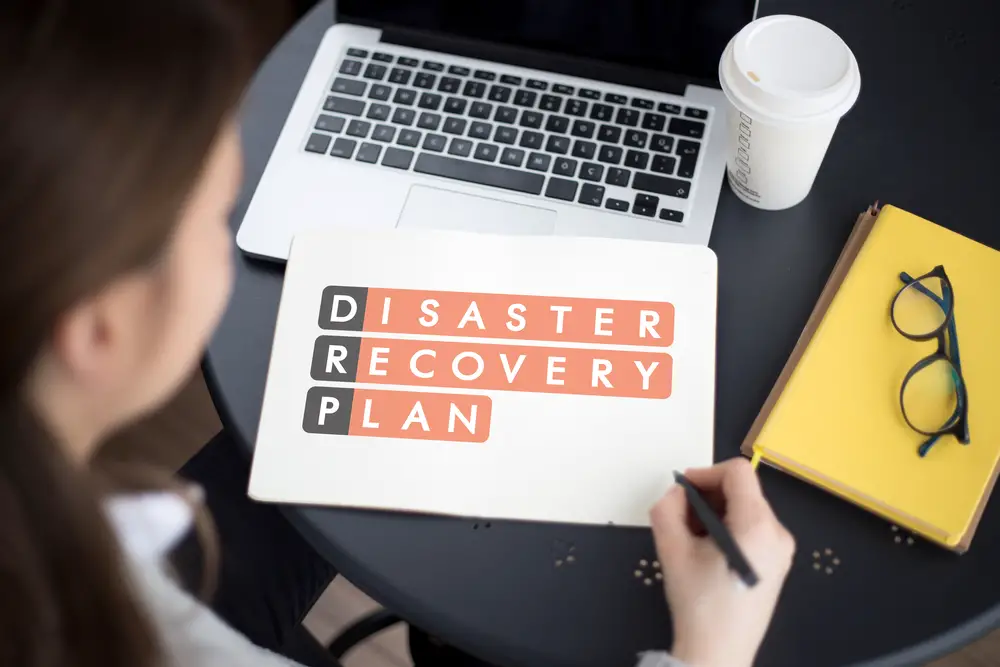At its most basic, disaster recovery planning (DRP) is a process and set of procedures designed to protect an organization from the effects of significant negative events. These events can come in many forms, such as power outages, fires, floods, Natural disasters, and even malicious attacks which can affect critical business functions.
On the other hand, business continuity planning (BCP) is designed to keep an organization up and running during and after a major disruptive event. Organizations can implement business continuity in their business operations.
The key difference between DRP and BCP is that DRP focuses on protecting essential data and systems. At the same time, BCP goes further by ensuring that the organization can maintain operations despite losing key personnel, facilities, or IT systems. Business continuity planning and disaster recovery are interlinked and support each other as elements of business continuity.
A comprehensive DRP can help organizations avoid or mitigate the effects of serious incidents by providing a roadmap for how to respond to them. By outlining specific roles and responsibilities in advance, a DRP can ensure that everyone knows what needs to be done in the event of an incident.
Understanding the disaster recovery vs business continuity definition is essential to ensure business operations can continue even when faced with an emergency or disruption. Disaster recovery is focused on restoring systems in the event of a disaster, such as a natural disaster or malicious attack, whereas business continuity is centered around preventing threats before they become disasters and helping organizations to carry on if an incident does occur.
Both disciplines involve assessing risks, investing in technology and solutions, and creating effective processes that can be implemented quickly when needed. There is no one-size-fits-all solution – businesses must decide which approach makes the most sense for their specific context and objectives.
Additionally, DRPs can help reduce reaction time by providing pre-approved actions that can be taken immediately following an incident. And finally, regular testing of DRPs can help ensure that they are up-to-date and effective.
BCP is critical for any organization that needs to maintain operations during and after a disruptive event. By outlining how critical functions will be carried out in the event of an incident, BCP can help minimize downtime and keep an organization running smoothly. Additionally, BCP can help maintain customer service levels and ensure vendors and suppliers remain unchanged. An example is a warehouse business continuity plan.
While both DRP and BCP are important for organizations, they are not interchangeable. It’s important to have both a DRP and a BCP to prepare you for any type of incident. But each type of plan has its own specific purpose:
– Disaster Recovery Plan: Disaster recovery focuses focus on data protection and system restoration.
– Business Continuity Plan: Business continuity focuses on maintaining operations during and after an incident. Specifically critical business processes.
Most professionals assume their jobs will remain mostly unchanged daily, and they find comfort in rhythm or routine. Sometimes, however, a situation disrupts normal operations.
Developing strategies to keep key functions alive under pressure will help leaders improve. The second field addresses possible business interruptions: business continuity or disaster recovery. They minimize the impact of catastrophic events that may affect business operations’ capacity for reliable and efficient product delivery.
Disaster Recovery Planning (DRP) and Business Continuity Planning (BCP) are essential processes for all businesses, regardless of size or industry. DRP and BCP help organizations protect their people, property, and operations in the event of a disaster or incident.
Despite this, many businesses do not have an adequate disaster recovery or continuity plans. In this blog post, we will define DRP and BCP, discuss the benefits of each process, and outline key steps for creating an effective plan. Are you ready to learn more?

What is a Disaster Recovery Plan?
A disaster recovery plan is a document that outlines the steps a company or organization should take in the event of a natural or man-made disaster. This plan can include steps for evacuating employees, backups for important data and documents, communication protocols, and recovery strategies. Disaster recovery process is used to derive disaster recovery plan.
It is important to regularly review and update your disaster recovery plan to accurately reflect current practices and procedures. In a disaster, having a clear and comprehensive plan in place can greatly reduce stress and confusion, helping the organization recover quickly and efficiently.
Disaster recovery plans are a more detailed and specific part of business continuity plans. The scope of disaster recovery plans can sometimes be restricted by focusing on the data systems of the company’s business.
In simple terms, disaster recovery planning aims to save data and recover it immediately if a disaster occurs. With that in mind, a disaster recovery plan is often designed to meet a specific requirement of an IT department for restarting operations.
What is a Business Continuity Plan?
A business continuity plan sets procedures and guidelines for maintaining operations during unexpected disruptions or disasters. This could include natural disasters, power outages, cyber-attacks, or other events that may impact a business’s ability to function. The business continuity plan outlines steps for mitigating risks, recovering critical operations, and communicating with employees and stakeholders during the disruption.
It is important for businesses to have a comprehensive plan in place to minimize potential losses and ensure a swift return to normal operations. Developing an enterprise business continuity plan helps businesses prepare for the unexpected and ensures they can continue providing their products or services despite unforeseen challenges. Inclusions in business continuity plan are crucial.
A plan for business continuity explains how the business is prepared to operate even in an emergency situation such as a natural disaster. The end objective is to ensure that an organization maintains its economic viability even when a crisis is imminent. Organizations can use business continuity management systems to generate BCPs.
Business continuity plans encompass each area of your business, including: Can organizations find a single point of failure? How important are equipment, personnel, and suppliers?
A Disaster Recovery Plan versus a Business Continuity Plan
A Disaster Recovery Plan (DRP) focuses on restoring disrupted technology and systems in the event of a natural or man-made disaster. On the other hand, a Business Continuity Plan (BCP) considers how to keep a business operating during and after such events.
While DRPs and BCPs often overlap and work together, they have different priorities and focus areas. While a DRP may address how to recover lost data, for example, a BCP may consider how to maintain customer relationships or find temporary office space. It is important for businesses to have both DRPs and BCPs in place to ensure they are prepared for any potential disruptions.
A Disaster Recovery Plan focuses on recovering from an adverse event, such as a natural disaster or cyber attack. In contrast, a Business Continuity Plan outlines how the business will continue to operate during and after a disruptive event. Both plans are necessary for maintaining operations and minimizing downtime in the face of unexpected challenges.
However, it is important to note that creating these plans can be time-consuming and resource-intensive, so it is crucial for businesses to prioritize their specific needs and create plans that address their unique risks and vulnerabilities.
Disaster Recovery is the process of recovering data after the destruction of a server or computer system from damage. Unlike continuity, business continuity refers to how the business maintains operations during a technical failure.
Likewise, a Disaster or Recovery Planning plan explains how businesses respond to a disaster. A Business Continual Operating System (BROS) describes ways businesses can survive during resiliency.

Business Continuity versus Disaster Recovery Plan
The main distinction lies in their focus: a BCP takes a broader view, addressing how a business will continue functioning during and after any disruption. This may include steps for maintaining operations during power outages, natural disasters, cyber-attacks, or supply chain interruptions.
On the other hand, a DRP is more specific and addresses only how an organization will recover from an IT-related disaster, such as hardware failures or data breaches. It’s important for businesses to have both types of plans in place to ensure they can weather any unexpected event.
Business continuity and disaster recovery plans are interchangeable. A disaster recovery plan represents a crucial component of a business continuity plan. Enterprise business continuity encompasses BCP and DRP.
What is BCDR? Business continuity and Disaster Recovery guide
Business continuity and disaster recovery are closely related practices that support the organization in the event a disaster occurs. Resiliency is increasingly important for organizations facing multiple threats, including terrorism and natural disaster.
Business continuity recovery has become increasingly important in these times. All organizations – from small businesses to big companies – depend on digital technologies for revenue, services, and support to meet customer expectations.
Key Differences Between a Disaster Recovery Plan vs. a Business Continuity Plan
Disaster recovery plans prioritize restoring IT systems and data in a disaster. On the other hand, business continuity plans focus on maintaining or quickly resuming business operations during a disruption of business-critical functions.
That said, they can work in tandem- a disaster recovery plan may be necessary for enacting a successful business continuity plan. It’s important for businesses to have both types of plans in place to ensure smooth operations no matter what challenges come their way.
Both terms have many similarities; the goal is for both businesses to continue growing. Nonetheless, there are key differences between business disaster recovery and business continuity plans. Your customer will know that this is an independent plan that performs different jobs, each with its specific purpose.
Business continuity plans typically emanate from business impact analysis on critical business processes. Business impact analysis is done in collaboration with business partners. Business partners understand critical operations and can create a typical business continuity plan that focuses on specific recovery strategies for critical business operations.
Why do Disaster Recovery and Business Continuity matter?
Business continuity specifies what happens after disasters. This can offer a contingency plan that explains how the company could continue to operate in the event of a move to a different place. Disaster recovery strategies need to have a contingency budget.
Business continuity plans should also include the possibility of a small interruption or a smaller disaster like a prolonged power outage. A business continuity plan focuses on recovery procedures from a risk assessment exercise done in line with business leaders.
Disaster recovery refers to a business’s plan to respond to a catastrophe, including natural disasters, fires, terrorism, or an active shooter. Disaster recovery is the action taken by the organization to respond quickly and efficiently to an incident and return to normal operations.
The importance of advanced planning
When businesses face a disaster without adequate planning, the consequences are devastating. The main impact is financial losses: the longer businesses go without providing their products or services, the greater they lose money.
This loss may eventually lead businesses to make hard decisions like reducing staff. Nonetheless, technological consequences may occur, like losing important or confidential info. A disaster recovery strategy may help companies reduce losses during an unexpected event.
What should be Included in a Disaster Recovery plan?
Disaster recovery plans must cover everything necessary to recover quickly after a disaster. Your disaster recovery plan should be reviewed periodically to ensure accuracy because there are no known disasters when disasters occur.
A disaster recovery plan is a critical component of risk management for any business. It should outline specific procedures to follow in a natural disaster, power outage, or other emergency situation.
This can include data backup and system redundancy steps, communication strategies for employees and customers, and damage assessment and recovery protocols. It is important to regularly review and update the plan and test it with mock scenarios to ensure effectiveness in a real-life situation.
In addition, all employees should be trained in their roles in the event of an emergency. Businesses can minimize potential damages and quickly bounce back from unexpected events.
How can disaster recovery plans be tested?
Depending on your business continuity strategy, there are five commonly used disaster-resistant test methods: simulation, tabletop exercise, parallel test, full interruption test, and cutover test. A simulation allows for a step-by-step recovery plan review without interrupting business activities.
A tabletop exercise allows for a more in-depth discussion and planning with key personnel. A parallel test means that both the original and recovery systems are run simultaneously to ensure a smooth transition.
A full interruption test involves shutting down the primary system and switching over to the recovery system for a long time. And finally, a cutover test is similar to the full interruption test but involves officially transitioning from the primary system to the recovery system without any prior warning or testing.
Mock drills and simulations are of common ways to test plans. These exercises allow individuals and teams to practice carrying out the steps outlined in the plan and can help identify any gaps or weaknesses before a real disaster occurs.
It’s important to involve multiple departments and stakeholders in these tests, as well as any external partners such as local emergency response agencies. Regularly reviewing and updating the disaster recovery plan based on these tests is also crucial in keeping the plan current and effective.
Another potential way to test a disaster recovery plan is to simulate a disaster scenario through computer modelling or other technological means. This can provide valuable insight into how well an organization can handle different disasters.
Leadership in times of crisis
A good crisis manager should always be prepared to handle situations. Crisis management is an additional business skill essential to their success.
In times of crisis, it is crucial to have strong leadership that can navigate the challenges and make difficult decisions. This means making quick decisions and effectively communicating with team members and stakeholders.
It also involves being agile and adaptable, as crises often bring unexpected obstacles. A good leader in a crisis demonstrates passion and dedication, inspiring others to come together and work towards a solution. They inspire trust and confidence, allowing the team to feel supported through difficult times.
Leadership is lifting a person’s vision to higher sights, raising a person’s performance to a higher standard, and building a personality beyond its normal limitations.” With strong leadership in times of crisis, they need to have the ability to overcome challenges and come out stronger on the other side.
Analytic and problem-solving skills are vital to assessing potential threats and determining the best approach to combat these threats. Communication skills are essential in creating a plan and training employees to respond to a crisis.
Crisis Management Careers
Crisis management plays a key role in many career paths. Each job offers an individual leader’s position at various stages of life through turbulent times.
Geographic Systems Information Coordinator
Geographic information coordinators use countless sources, including survey maps, to prepare for various emergencies. Technical skill sets and data analytics skills can be essential for successful work. PayScale says the average salary for a coordinator is around 58k per year.
Emergency Management Director
Emergency managers plan business operations to deal with natural disasters. Strong thinking abilities, as well as problem-solving skills, are essential. During the program’s first three years, emergency management directors received an average pay of $7490 per month.
Disaster Program Manager
The Disaster Management Department can arrange shelters and other facilities responding to disaster events. They have to stay calm under extreme pressure and have empathy or understanding. In May 2020, salaries for the position were approximately $48,000.
Conclusion
In conclusion, disaster recovery planning (DRP) is a process designed to protect organizations from the effects of negative events. In contrast, business continuity planning (BCP) is designed to keep organizations up and running during and after disruptive events. While both are important, they serve different purposes; therefore, having both types of plans in place is essential.
Both plans should be tailored to your specific business needs. Do you have a DRP or BCP in place? It is time to develop one.

Chris Ekai is a Risk Management expert with over 10 years of experience in the field. He has a Master’s(MSc) degree in Risk Management from University of Portsmouth and is a CPA and Finance professional. He currently works as a Content Manager at Risk Publishing, writing about Enterprise Risk Management, Business Continuity Management and Project Management.

